The History of a Mouthful of Bread, Jean Macé [best autobiographies to read TXT] 📗
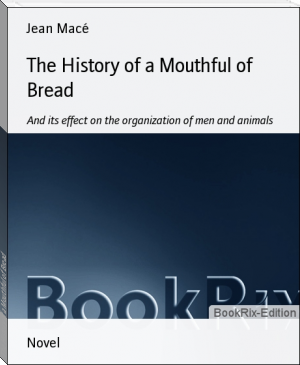
- Author: Jean Macé
Book online «The History of a Mouthful of Bread, Jean Macé [best autobiographies to read TXT] 📗». Author Jean Macé
insects, by a secret circulation, which cannot be represented on the map; i.e. by immense currents everlastingly in action, some on the surface, some in the mid-heart of the ocean, which drive it in ceaseless course from the equator to the poles, from the poles to the equator; so that the Supreme Intelligence, in His overruling providence, has ordained the same law to set in movement the immensity of ocean, and to effect circulation in the cockchafer's few drops of blood. In the latter we find the moving agent to be a long tube, which runs the whole length of the back, and is called the dorsal vessel (from the Latin dorsum , back). I told you that the cockchafer had no heart under his cuirass, but I spoke too hastily. The dorsal vessel is a true heart , but a heart devoid of veins or arteries, and thrown into the midst of the blood. It dilates and contracts like ours, sucks in the blood by means of side-valves, which act as our own do, and drives it back again into the mass by that valve at its extremities, which opens near the head. From thence arises a continued to-and-fro movement, which sends the blood from the head to the tail, and brings it back again from the tail to the head. But who would recognise, in this simple primitive organisation, where all seems to go on of its own accord, as it were, the same machine, with all its complicated movements, that we have been so long considering?
Well, in this apparently universal shipwreck of all the organs we know so well, there is yet one which survives, and remains the same as ever, namely, the digestive tube. I began by saying the insect is a bird. His digestive tube is formed upon the same pattern as that of birds, so that naturalists have bestowed the same names on the various parts in each of them. After the oesophagus comes a crop ( jabot ), very distinctly indicated; then a gizzard with thick coats, in which the food is ground down. The hen, if you remember, swallows small pebbles, which perform in her gizzard the office of the teeth in our mouths. The cockchafer has no need to swallow anything. His gizzard is furnished with little pieces of horn; real teeth, fixed in their places, which have a great advantage over the chance teeth picked up at random by the hen. I pointed out to you in birds, between the crop and the gizzard, a swelling or enlargement of the digestive tube, pitted with small holes, where the food is moistened by juices. The same enlargement is found here, covered all over with a multitude of small tubes, which might easily be mistaken for hairs, from which also falls a perfect shower of juices. The only difference is, that it comes after the gizzard, instead of before it, as in birds. Some naturalists, considering that the manufacture of chyle takes place here, have called it the chylific ventricle; [Footnote: The corresponding protuberance of the birds bears a name, somewhat similar, but stillmore barbarous. I had passed it over in silence, because, I make the confession in all humility, I do not understand it; but a remorse now seizes me: it is called the Ventricule succenturie. ] a somewhat barbarous name, but one which explains itself, and might with truth be applied to the duodenum of the higher animals. Bile is poured in close to the hinder end of it, but you must not look for the liver; it has disappeared, or rather its form is entirely changed. You remember what the pancreas had become in fishes; i.e. a row of tubes giving out a salivary fluid. Such is exactly the appearance of the liver in the cockchafer.
Instead of that fleshy substance on which hitherto the office of preparing the bile had devolved, you see nothing but a floating bundle of long loose tubes, which, opening into the intestines, pour in their bile. The organ is transformed, but we recognise it again by the office it performs, which continues the same. As to the pancreas it is wanting here, as in the fish with salivary glands; but in its place in many insects other tubes, acting also as glands, pour saliva into the pharynx; i. e. , the cavity at the back of the throat.
As you see, therefore, everything is found complete in this tube of a few inches long; and you can also distinguish there a small and a large intestine. We are speaking of the cockchafer, which feeds on the leaves of trees; and it is for this reason I name some inches as the length of the digestive tube. This would not be longer than the body itself, had it been destined, as in the case of many other insects, to receive animal food. In fact, the law which we have shown to exist with regard to the ox and the lion, rules also over the insect-world; and whilst a radical change seems to have been made in the rest of the organisation, here everything is in its place, and we find ourselves in the same system.
Was I not justified in asserting that the unity of the animal plan is to be found in the digestive tube? and that this is the unchanging basis upon which the Creator of the animal world had raised his varied constructions?
How would it be, then, if we were to take the insect from its starting-point when it is only a worm, that is to say, merely and simply a digestive tube? for I am only telling you a small portion of its history here; a history you must know, which reveals a miracle still more wonderful than the transformation of the little tadpole into the frog! There is a brilliant-colored fly which comes buzzing about the meat-safe-the bluebottle-do you know her? It is on her account that we put large covers of iron wire over the dishes of meat; but, perhaps, you never troubled yourself to think why.
But the truth is, she only comes there to deposit her eggs in the good roast-meat; and if she could get near enough to do so, you would soon afterwards see it swarming with little white worms, which would entirely take away all your appetite. These worms are only flies out at nurse, and they will find their wings by-and-by if you only give them time enough. Disgusting as they may appear on a dining-table, I assure you they deserve more interest than you may think. When we come to speak of worms, we will ask of them to let out the secret of the mysterious transformations of animals.
In the meantime, let us finish the observations we were making on the
perfect insect , as this little creature is called when he has passed through the intermediate stages which separate him from the undeveloped condition. Forgive me, my dear child, here I am speaking to you as if you were a grown-up woman! This is because it is so difficult to explain things of this sort in any other way. And now that you have been introduced into the midst of the wonders of creation, you ought to familiarise yourself with the ideas and terms they have suggested to mankind. I began with you as a child, and great would be my triumph if I could leave you a grown-up girl! And I flatter myself that I have so far set your brain, to work, under pretence of amusing you, that this hope is not altogether unfounded. I found it necessary to say this to you in confidence, because I have just read over our first conversations, and perceive that I have insensibly put you on a different diet from the one I began with. I am obliged to comfort myself by remembering that you have grown older since, and that you are now acquainted with a great many things which you had never heard spoken of then. And this is the secret of all transformations. We crept on at first over ground that was quite unknown to us; but as we went along, our wings must have begun to grow, and we are now able to fly a little!
Do not be afraid, however; I will exercise your tiny butterfly-wings very carefully just at present. We have only to examine what becomes of the chyle of the cockchafer after it has been prepared in the pretty little tube so finely wrought. We men have chyliferous vessels which draw up chyle from the intestines and throw it within a short distance of the heart, into the torrent of blood, where its education is completed. But the cockchafer, who has no other vessels than his air-pipes, and the dorsal tube , which has no communication with the intestines, what is he to do? Do not distress yourself about him. Make a tube of a bit of linen, well sewn together, and fill it with water. Sew it together as firmly as you may on all sides, the water will have no difficulty in escaping through the meshes. And this is just what happens with the little tubes found in animals, the coats of which are formed of interwoven fibres. By-the-by, from thence comes their name of " tissue ," which they share in common with all the solid substances of the body, for all were once supposed to have the same general structure. The intestine of the cockchafer floats, did I not say? in the lake of blood which fills the whole cavity of the body. Well, then, the chyle has only to penetrate through these coats, to go where it is wanted. Hence it is not at all surprising that this blood should be white; and I have very good reasons just now for comparing it to our chyle . It is, indeed, chyle arriving directly from the place of its manufacture, without undergoing any other process; by which you may see that this little machine (of the digestive organs of the cockchafer), though differing in appearance so entirely from our own, is reducible to the same elements of construction, and that life is maintained by the same process as with us; namely, by the action of the air upon the albumen extracted from food. The cockchafer, it is true, is much further removed from being a fellow-creature of ours than even the horse; but the principle of life is the same with him as with us. And this is quite enough to cause children, who can feel and reason, to think twice before they begin to torture, by way of amusement, a creature whose life the God of goodness has subjected to the same conditions as our own. I speak this to those miserable little executioners who make toys of suffering animals: but the case is different with agriculturists, who have necessarily to contend with the devourers of their harvests, and whom, I admit, it would not be reasonable to bind down by the maxim of Uncle Toby.
[Footnote: I have introduced my Uncle Toby, who really has nothing to do here, in order to make you acquainted with a few lines of Sterne, which I wish I could place before the eyes of every child in the world.
"Go!" said he, one day at table, to an enormous fly which had been buzzing around his nose and had cruelly tormented him all dinner time. After many attempts, he finally caught him in his hand. "Go! I will not do thee any harm," said my Uncle Toby, rising and crossing the room with the fly in his hand; "I would not hurt a
Well, in this apparently universal shipwreck of all the organs we know so well, there is yet one which survives, and remains the same as ever, namely, the digestive tube. I began by saying the insect is a bird. His digestive tube is formed upon the same pattern as that of birds, so that naturalists have bestowed the same names on the various parts in each of them. After the oesophagus comes a crop ( jabot ), very distinctly indicated; then a gizzard with thick coats, in which the food is ground down. The hen, if you remember, swallows small pebbles, which perform in her gizzard the office of the teeth in our mouths. The cockchafer has no need to swallow anything. His gizzard is furnished with little pieces of horn; real teeth, fixed in their places, which have a great advantage over the chance teeth picked up at random by the hen. I pointed out to you in birds, between the crop and the gizzard, a swelling or enlargement of the digestive tube, pitted with small holes, where the food is moistened by juices. The same enlargement is found here, covered all over with a multitude of small tubes, which might easily be mistaken for hairs, from which also falls a perfect shower of juices. The only difference is, that it comes after the gizzard, instead of before it, as in birds. Some naturalists, considering that the manufacture of chyle takes place here, have called it the chylific ventricle; [Footnote: The corresponding protuberance of the birds bears a name, somewhat similar, but stillmore barbarous. I had passed it over in silence, because, I make the confession in all humility, I do not understand it; but a remorse now seizes me: it is called the Ventricule succenturie. ] a somewhat barbarous name, but one which explains itself, and might with truth be applied to the duodenum of the higher animals. Bile is poured in close to the hinder end of it, but you must not look for the liver; it has disappeared, or rather its form is entirely changed. You remember what the pancreas had become in fishes; i.e. a row of tubes giving out a salivary fluid. Such is exactly the appearance of the liver in the cockchafer.
Instead of that fleshy substance on which hitherto the office of preparing the bile had devolved, you see nothing but a floating bundle of long loose tubes, which, opening into the intestines, pour in their bile. The organ is transformed, but we recognise it again by the office it performs, which continues the same. As to the pancreas it is wanting here, as in the fish with salivary glands; but in its place in many insects other tubes, acting also as glands, pour saliva into the pharynx; i. e. , the cavity at the back of the throat.
As you see, therefore, everything is found complete in this tube of a few inches long; and you can also distinguish there a small and a large intestine. We are speaking of the cockchafer, which feeds on the leaves of trees; and it is for this reason I name some inches as the length of the digestive tube. This would not be longer than the body itself, had it been destined, as in the case of many other insects, to receive animal food. In fact, the law which we have shown to exist with regard to the ox and the lion, rules also over the insect-world; and whilst a radical change seems to have been made in the rest of the organisation, here everything is in its place, and we find ourselves in the same system.
Was I not justified in asserting that the unity of the animal plan is to be found in the digestive tube? and that this is the unchanging basis upon which the Creator of the animal world had raised his varied constructions?
How would it be, then, if we were to take the insect from its starting-point when it is only a worm, that is to say, merely and simply a digestive tube? for I am only telling you a small portion of its history here; a history you must know, which reveals a miracle still more wonderful than the transformation of the little tadpole into the frog! There is a brilliant-colored fly which comes buzzing about the meat-safe-the bluebottle-do you know her? It is on her account that we put large covers of iron wire over the dishes of meat; but, perhaps, you never troubled yourself to think why.
But the truth is, she only comes there to deposit her eggs in the good roast-meat; and if she could get near enough to do so, you would soon afterwards see it swarming with little white worms, which would entirely take away all your appetite. These worms are only flies out at nurse, and they will find their wings by-and-by if you only give them time enough. Disgusting as they may appear on a dining-table, I assure you they deserve more interest than you may think. When we come to speak of worms, we will ask of them to let out the secret of the mysterious transformations of animals.
In the meantime, let us finish the observations we were making on the
perfect insect , as this little creature is called when he has passed through the intermediate stages which separate him from the undeveloped condition. Forgive me, my dear child, here I am speaking to you as if you were a grown-up woman! This is because it is so difficult to explain things of this sort in any other way. And now that you have been introduced into the midst of the wonders of creation, you ought to familiarise yourself with the ideas and terms they have suggested to mankind. I began with you as a child, and great would be my triumph if I could leave you a grown-up girl! And I flatter myself that I have so far set your brain, to work, under pretence of amusing you, that this hope is not altogether unfounded. I found it necessary to say this to you in confidence, because I have just read over our first conversations, and perceive that I have insensibly put you on a different diet from the one I began with. I am obliged to comfort myself by remembering that you have grown older since, and that you are now acquainted with a great many things which you had never heard spoken of then. And this is the secret of all transformations. We crept on at first over ground that was quite unknown to us; but as we went along, our wings must have begun to grow, and we are now able to fly a little!
Do not be afraid, however; I will exercise your tiny butterfly-wings very carefully just at present. We have only to examine what becomes of the chyle of the cockchafer after it has been prepared in the pretty little tube so finely wrought. We men have chyliferous vessels which draw up chyle from the intestines and throw it within a short distance of the heart, into the torrent of blood, where its education is completed. But the cockchafer, who has no other vessels than his air-pipes, and the dorsal tube , which has no communication with the intestines, what is he to do? Do not distress yourself about him. Make a tube of a bit of linen, well sewn together, and fill it with water. Sew it together as firmly as you may on all sides, the water will have no difficulty in escaping through the meshes. And this is just what happens with the little tubes found in animals, the coats of which are formed of interwoven fibres. By-the-by, from thence comes their name of " tissue ," which they share in common with all the solid substances of the body, for all were once supposed to have the same general structure. The intestine of the cockchafer floats, did I not say? in the lake of blood which fills the whole cavity of the body. Well, then, the chyle has only to penetrate through these coats, to go where it is wanted. Hence it is not at all surprising that this blood should be white; and I have very good reasons just now for comparing it to our chyle . It is, indeed, chyle arriving directly from the place of its manufacture, without undergoing any other process; by which you may see that this little machine (of the digestive organs of the cockchafer), though differing in appearance so entirely from our own, is reducible to the same elements of construction, and that life is maintained by the same process as with us; namely, by the action of the air upon the albumen extracted from food. The cockchafer, it is true, is much further removed from being a fellow-creature of ours than even the horse; but the principle of life is the same with him as with us. And this is quite enough to cause children, who can feel and reason, to think twice before they begin to torture, by way of amusement, a creature whose life the God of goodness has subjected to the same conditions as our own. I speak this to those miserable little executioners who make toys of suffering animals: but the case is different with agriculturists, who have necessarily to contend with the devourers of their harvests, and whom, I admit, it would not be reasonable to bind down by the maxim of Uncle Toby.
[Footnote: I have introduced my Uncle Toby, who really has nothing to do here, in order to make you acquainted with a few lines of Sterne, which I wish I could place before the eyes of every child in the world.
"Go!" said he, one day at table, to an enormous fly which had been buzzing around his nose and had cruelly tormented him all dinner time. After many attempts, he finally caught him in his hand. "Go! I will not do thee any harm," said my Uncle Toby, rising and crossing the room with the fly in his hand; "I would not hurt a
Free e-book «The History of a Mouthful of Bread, Jean Macé [best autobiographies to read TXT] 📗» - read online now
Similar e-books:
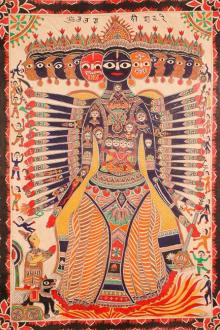
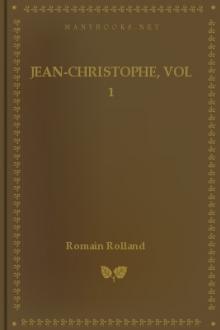
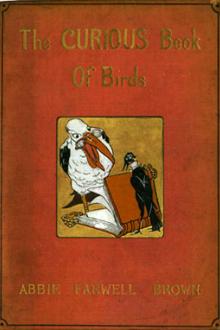

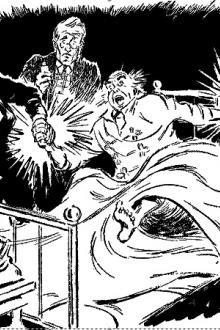
Comments (0)